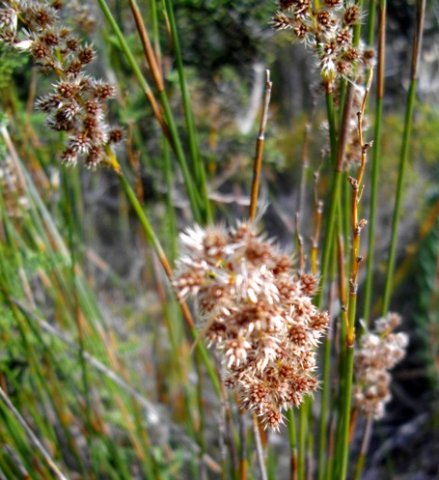Ceratocaryum argenteum male plant

Author: Ivan Lätti
Photographer: Thabo Maphisa
These male flowers of Ceratocaryum argenteum, sometimes called elephant quills, were seen in Fernkloof in July. Ceratocaryum is a genus of eight species in the Restionaceae family, all endemic to the Western Cape.
C. argenteum grows a spreading underground rhizome and a large tussock of unbranched, stout culms that may be slightly hollow. The male and female plants grow to similar size, about 2,5 m tall, their culms about 6 mm thick.
The culm sheaths have membranous, finely lacerated upper margins. These sheaths persist, remaining tightly wrapped around the culms.
The male inflorescence is big, bushy and papery, its colour white or silvery and brown. Individual spikelets are indistinct, grouped in a multitude of small panicles at upper culm nodes. The bracts and tepals of the tiny florets are linear, equal in size. The large spathes below the flowers drop off early.
The species distribution is mainly on the coastal plains around Bredasdorp to Riversdale, extending somewhat into the Kleinrivier Mountains near Hermanus and Stanford.
The habitat is moist fynbos and scrub in sandy soils at altitudes below 400 m. The species is not considered to be threatened in its habitat early in the twenty first century.
C. argenteum has an unusual seed dispersal method: Its berries or nuts resemble antelope droppings in appearance and odour. This mimicry tricks dung beetles into gathering and burying them, i.e. planting them. This happens often enough in suitable places for new plants to grow, keeping the plant population stable (Dorrat-Haaksma and Linder, 2012; Mustart, et al, 1997; Marais, (Ed.), 2017; Bean and Johns, 2005; www.redlist.sanbi.org).

